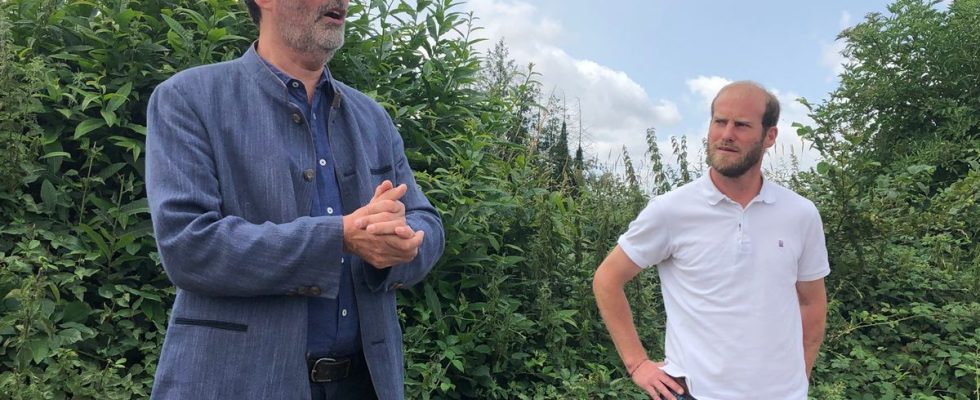For a very long time they have structured the landscape of our French countryside, shaped by generations of men and women. But, from the 1950s, the hedges gradually disappeared from the bocages. The fault with the policy of regrouping which consisted after the Second World War in regrouping agricultural parcels formerly fragmented. We were then in the middle of a period of forced modernization of agriculture and it was therefore necessary to clear space at the edge of the field to let the machines pass. “It’s true that we razed everything at the time,” admits Christophe Geslin, mayor of Essé, one of the first towns to be consolidated in Ille-et-Vilaine between 1958 and 1963. “We can criticize our predecessors, he continues. But we have to put ourselves in the context of the time. At the end of the war, France was undernourished and it was therefore necessary to produce to feed the country. »
Perceived as an obstacle, the hedges were therefore razed with the advent of intensive and mechanized agriculture. According to a report from the Ministry of Agriculture, 70% of hedgerows have thus disappeared from French bocages since 1950, that is to say approximately 1.4 million kilometres. A trend far from being halted and which has even accelerated in recent years with 23,500 kilometers destroyed each year between 2017 and 2021, against 10,400 between 2006 and 2014. “We are witnessing the destruction of the French agricultural landscape”, is alarmed Daniel Salmon.
“Agronomic and ecosystem benefits”
With his colleague Joël Labbé, the environmental senator from Ille-et-Vilaine is fighting to defend the hedges. In early July, he tabled a bill “in favor of the preservation and recovery of the hedge. Because these plant fences, made up of trees and shrubs and which surround the fields, are proving to be invaluable weapons in the fight against climate change. “It’s a natural tool that works with agronomic and ecosystemic benefits for agriculture and society that no longer need to be demonstrated”, assures Daniel Salmon, before listing all the benefits of the hedge:
It already makes it possible to store carbon and to fight against soil erosion by retaining water. If there are no more hedges, the water runs down the fields and tons of earth end up in the streams. It also acts as a windbreak and serves as shade and feed for livestock. It is also an ecosystem very rich in biodiversity, which serves in particular as a shelter for predators of pests.
At a time of global warming, it is therefore urgent, according to him, to restore the bocage hedges and to plant others, many others. In his bill, the senator advances the objective of increasing the length of hedgerows by 100,000 kilometers and restoring 450,000 kilometers by 2030. “Doing nothing would be criminal for future generations and that is with the farmers that we have to do it to regain a quality of life”, underlines the Breton elected official.
Valuing bocage wood
A very agricultural region, Brittany is also a good student in this area, thanks in particular to the Breizh Bocage program which has made it possible to stem the disappearance of hedgerows. Dairy farmer in Essé, Christophe Mellier got involved in the process, planting new hedges on the family farm which he took over in 2008. he testifies. It has been inculcated for too long that the hedge was an inconvenience, but there is now a need to re-educate the peasant world so that it finds a little common sense. »
This requires training to relearn good hedge management practices. But also by financial incentives for farmers for whom “the hedge is often perceived as a burden from which we derive no benefit”, according to Daniel Salmon. It proposes in this sense “a tax credit for farms benefiting from the certification of sustainable hedge management. But he is counting above all on the emergence of hedgerow wood sectors that would allow farmers to add value to the wood harvested from their hedges. “This sustainable and local resource can generate income for them,” he concludes.

